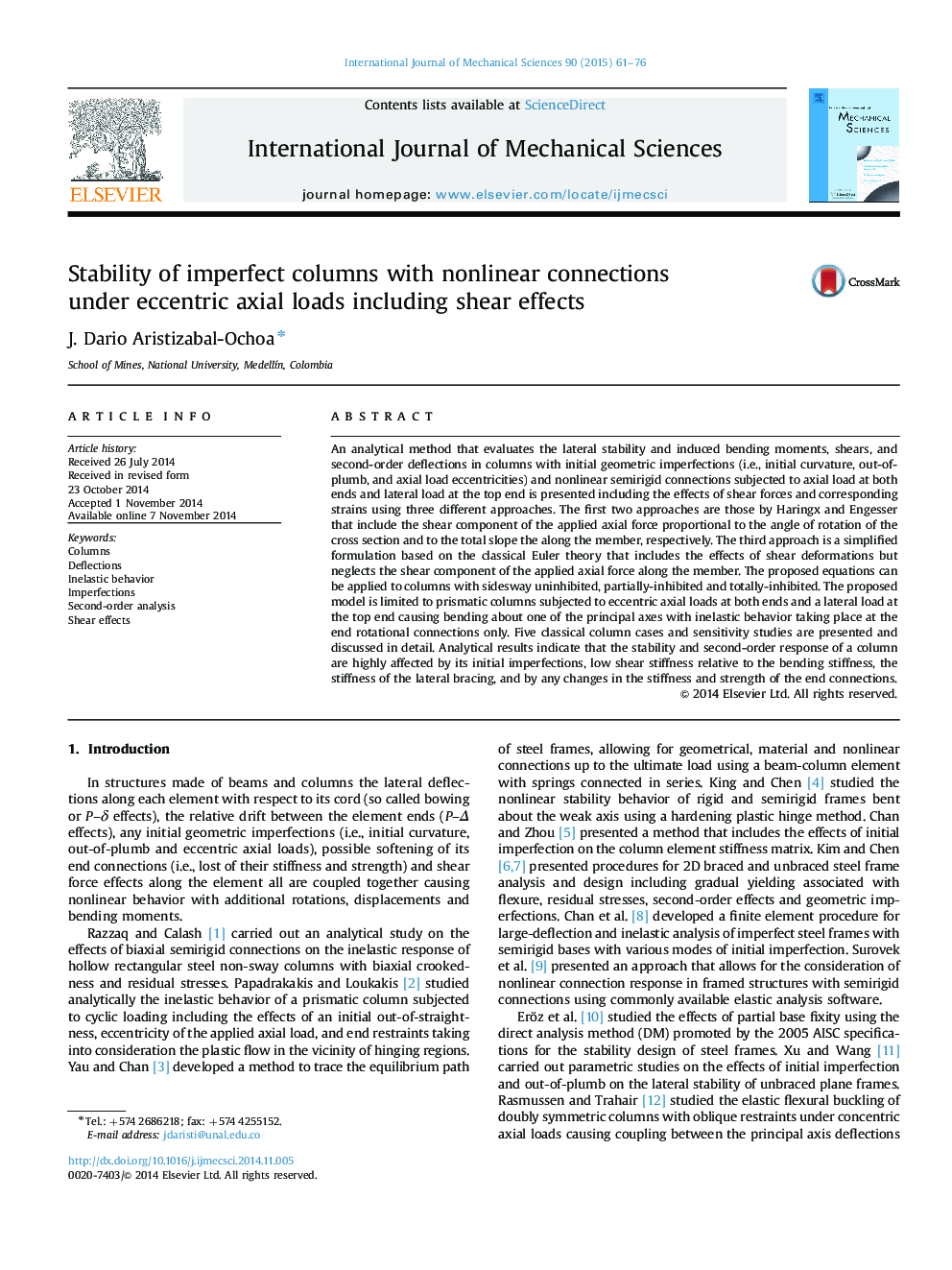| Article ID | Journal | Published Year | Pages | File Type |
|---|---|---|---|---|
| 782195 | International Journal of Mechanical Sciences | 2015 | 16 Pages |
•The stability and second-order analyses of columns are presented.•The effects of initial imperfections, nonlinear connections and shear forces are studied.•The proposed method is based on the classical Euler, Engesser and Haringx approaches.•Sensitivity studies and examples are presented that illustrate these combined effects.
An analytical method that evaluates the lateral stability and induced bending moments, shears, and second-order deflections in columns with initial geometric imperfections (i.e., initial curvature, out-of-plumb, and axial load eccentricities) and nonlinear semirigid connections subjected to axial load at both ends and lateral load at the top end is presented including the effects of shear forces and corresponding strains using three different approaches. The first two approaches are those by Haringx and Engesser that include the shear component of the applied axial force proportional to the angle of rotation of the cross section and to the total slope the along the member, respectively. The third approach is a simplified formulation based on the classical Euler theory that includes the effects of shear deformations but neglects the shear component of the applied axial force along the member. The proposed equations can be applied to columns with sidesway uninhibited, partially-inhibited and totally-inhibited. The proposed model is limited to prismatic columns subjected to eccentric axial loads at both ends and a lateral load at the top end causing bending about one of the principal axes with inelastic behavior taking place at the end rotational connections only. Five classical column cases and sensitivity studies are presented and discussed in detail. Analytical results indicate that the stability and second-order response of a column are highly affected by its initial imperfections, low shear stiffness relative to the bending stiffness, the stiffness of the lateral bracing, and by any changes in the stiffness and strength of the end connections.
